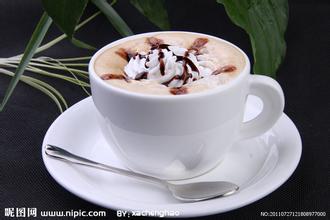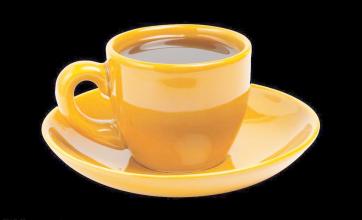Introduction of Ugandan Coffee Bean Flavor Coffee beans from Uganda Coffee Manor
National flag: rectangular, the ratio of length to width is 3 ∶ 2. From top to bottom, it is composed of six parallel and equal wide strips of black, yellow and red, and there is a white circle in the center of the flag, among which is a Ugandan national bird-crowned crane. Black represents the Ugandan people, symbolizing blacks; yellow symbolizes sunshine; red symbolizes freedom, and the tricolor combination means that the Ugandan people gain independence and freedom under the sun. On important occasions or formal flag-raising ceremonies, the national flag with national bird pattern is used; in general, black, yellow and red flags with no national bird pattern are used. National emblem: the central pattern is the shield emblem. The upper part of the shield has blue and white ripples, symbolizing the country's waters. Uganda is known as the "water village of the East African Plateau"; in the middle is the shining sun, indicating that the country is in the equator; and the African drum in the lower part symbolizes the traditional culture of Uganda. it also represents the country's long history. The green highland below the shield emblem indicates the geographical location of Uganda, which is located in the northwestern part of the East African Plateau; the highlands are patterned with cotton peaches and coffee, representing the country's cash crops; and the blue and white ripples symbolize the Nile and Lake Victoria. Behind the shield emblem are two spears, flanked by antelopes and crowned cranes, and the bottom ribbon says in English, "for God and my motherland, Ugandan coffee beans have a unique flavor, which is very suitable for making Italian and other flavors of coffee. More importantly, Ugandan coffee beans are strictly screened according to the standards of the international market. To ensure its high quality and pollution-free characteristics, Uganda is one of the few countries in the world that can grow both Arabica and Robusta, with an environment and climate suitable for coffee growth. Uganda is located between 9-2000 meters above sea level, with an annual temperature of 15 ℃-28 ℃. Africa is the hometown of the two major varieties of coffee, Arabica and Robusta, while Uganda, which is located in eastern Africa and enjoys the laudatory names of "plateau water" and "Pearl of East Africa", is believed by many people as the birthplace of Robusta. Uganda coffee beans have a unique flavor and are very suitable for making Italian and other flavors. More importantly, Ugandan coffee beans are strictly screened according to the standards of the international market. To ensure that its high-quality, pollution-free characteristics fully permeate the romantic coffee of southern Europe. The foaming fresh milk (or whipped cream) above can be mixed with the strong bitterness of Italian coffee to make it taste mellow. It is the most popular fancy hot coffee today. Features: the biggest feature of cappuccino is the addition of a large amount of foam, which gives it a strong taste. Some people drink it in order to taste the taste of the foam and enjoy the density and compactness of the foam. The practice of this kind of foam is through the way of stirring, the strength of stirring is different, the time is different, and the final state of the foam is also different. After the foam is done, you have to pour it on the mixture of coffee and milk. When you meet a coffee shop clerk who loves life and knows beauty, he will pour the foam out. Unfortunately, the guy who meets the flat plate is just coffee with milk and milk. So, cappuccino is a bit like the chocolate Aganma used to say in Forrest Gump-you don't know what kind of cappuccino you're going to meet in the next one. Know-how

Important Notice :
前街咖啡 FrontStreet Coffee has moved to new addredd:
FrontStreet Coffee Address: 315,Donghua East Road,GuangZhou
Tel:020 38364473
- Prev

Burundian Coffee Manor introduces the characteristics of Burundian Coffee beans and Burundian Coffee
The cultivation of Arabica coffee trees in Cameroon (Cameroon) began in 1913 as the Blue Mountain Coffee from Jamaica, but the country also produces large quantities of Robbins coffee. The quality and characteristics of Cameroon coffee is similar to that of coffee from South America. The best coffee in the country comes from Bamileke and Bamoun in the northwest. Here, it also grows some giant coffees.
- Next

Ecuadorian Coffee producing area introduces Ecuadorian Coffee Flavor
In 1535, Flatoma de Belanga and others of Spain stumbled upon the Galapagos Islands. Thomas was born in 1487 on the Duro River in the province of Soria, Spain. He was the fourth bishop of Panama at that time. He was ordered to go to Peru. When his ship set sail from Panama on February 23, under the impact of a strong current, they were taken to the unknown surface of the ocean.
Related
- Detailed explanation of Jadeite planting Land in Panamanian Jadeite Manor introduction to the grading system of Jadeite competitive bidding, Red bid, Green bid and Rose Summer
- Story of Coffee planting in Brenka region of Costa Rica Stonehenge Manor anaerobic heavy honey treatment of flavor mouth
- What's on the barrel of Blue Mountain Coffee beans?
- Can American coffee also pull flowers? How to use hot American style to pull out a good-looking pattern?
- Can you make a cold extract with coffee beans? What is the right proportion for cold-extracted coffee formula?
- Indonesian PWN Gold Mandrine Coffee Origin Features Flavor How to Chong? Mandolin coffee is American.
- A brief introduction to the flavor characteristics of Brazilian yellow bourbon coffee beans
- What is the effect of different water quality on the flavor of cold-extracted coffee? What kind of water is best for brewing coffee?
- Why do you think of Rose Summer whenever you mention Panamanian coffee?
- Introduction to the characteristics of authentic blue mountain coffee bean producing areas? What is the CIB Coffee Authority in Jamaica?

